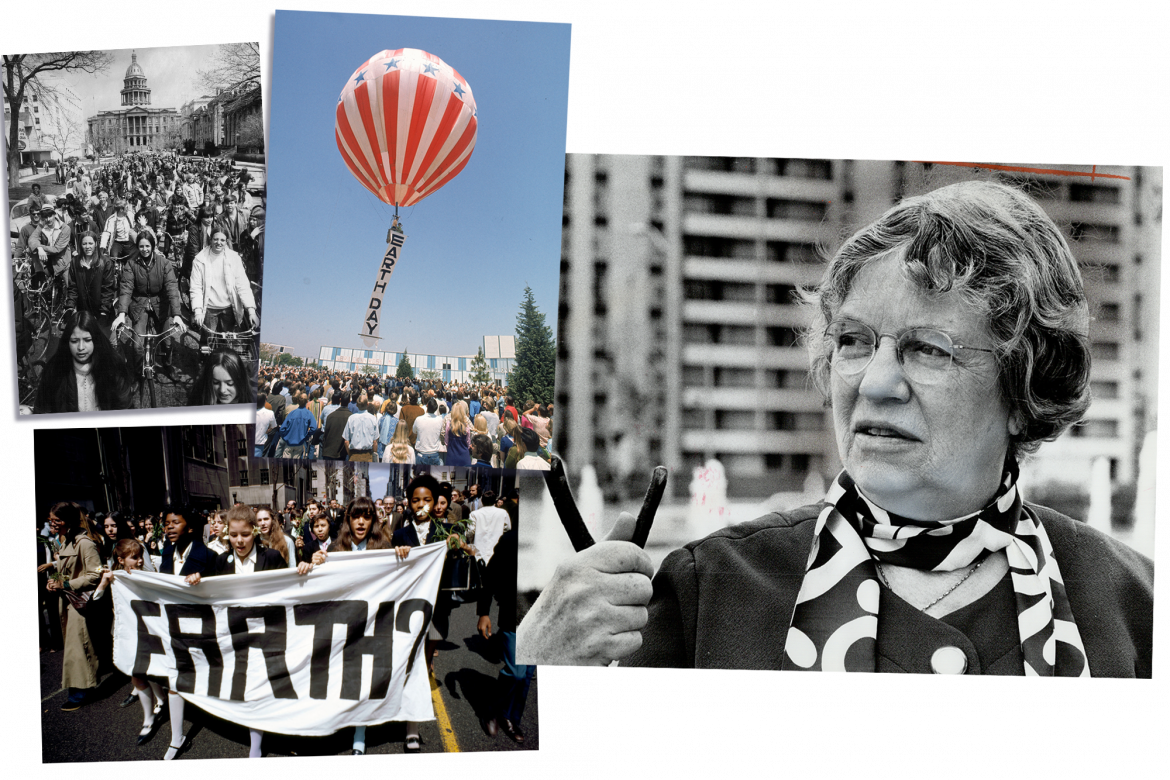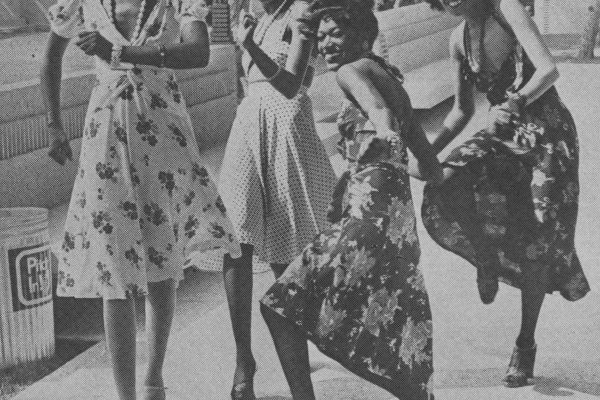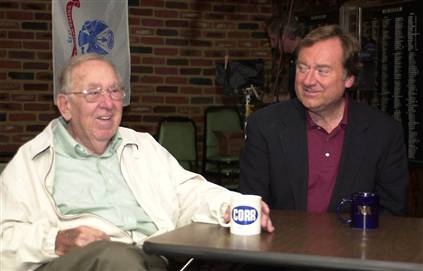Fifty years ago, at the dawn of the American environmental movement, Congress held a revelatory series of hearings featuring anthropologists and biologists but also an artist, a theologian, and a top sanitation worker. The author remembers the prescient testimony, and the bygone spirit of collegiality.
By Maureen Orth April 21, 2020 vf.com
Whenever I think about Earth Day, my mind races back to the morning in April 1970, when I got lost in the basement of the U.S. Capitol building while looking for a scarce women’s bathroom, with the acclaimed anthropologist Margaret Mead. It was a few days before the very first Earth Day, and Mead was scheduled to testify before the House Select Subcommittee on Education on behalf of a proposed bill called the National Environmental Education Act.
Fresh out of journalism school, I had been hired as a research consultant for the committee, tasked to find, schedule, and greet the witnesses. Margaret Mead was one of the most distinguished women of her day, and I was mortified as we wandered the bowels of the Capitol. Then 68, she had arrived a half hour early, wearing a full-length plaid cape and carrying a walking stick almost as tall as she was. After about five minutes of hearing her gnarled stick clack against the floor behind me with every step, I finally spied a door that said “Ladies.” Thankfully, the stern, unsmiling Dr. Mead was in a forgiving mood. “If we were late, I’d be critical,” she said, thumping her stick on the ground for emphasis. “But since we’re not late, I am not critical.”
Fifty years ago, on April 22, 1970, Earth Day started with a bang. The daylong, nationwide program of rallies, teach-ins, and symbolic gestures such as car-engine burials and campus funeral processions for Mother Earth, attracted the participation of 20 million Americans—about one tenth of the population. But in her testimony that morning, Mead warned that anytime Americans think they have accomplished something, their energy and attention tends to flit elsewhere. “We wouldn’t have women’s liberation today if women hadn’t gone home after women’s suffrage was won,” she said.
The hearings addressed fundamental questions about humanity’s relationship to the planet that were still unresolved. Who was going to be dominant in the relationship? Us or nature? When should children start learning about the environment? What kind of education was even needed at a time when there was no agreed-upon definition of ecology, and no one thought in ecosystems?
The proceedings took place against a backdrop of foment on many fronts. In 1969 and ’70, during Richard Nixon’s first term in office, the country was simultaneously in the throes of the anti-war movement, the population-control movement, the War on Poverty, the civil rights movement, and a surge of student activism, to name just a few. Conservation was not something activists thought much about. As an issue, it had previously been relegated to “bird-watchers and outdoor freaks,” wrote Irving Morrissett of the Social Service Education Consortium, who edited a book of the hearings. The Sierra Club was not a natural ally of Planned Parenthood, and cost-benefit analyses of environmental risks were basically unknown.
In early 1969, however, Senator Gaylord Nelson, Democrat of Wisconsin, a longtime environmental activist, got the idea for Earth Day while flying back to Washington from California, after viewing the horrendous effects of a huge oil spill in Santa Barbara and reading about college anti-war teach-ins. Nelson’s idea of a day devoted to environmental-consciousness raising caught on fast, and in November 1969 the first Earth Day was set for the following April.
On the Hill, Nelson found an ally on the House side in Congressman John Brademas, Democrat of Indiana, a Harvard graduate and Rhodes Scholar with a doctorate from Oxford. Brademas had just gotten his first House subcommittee chairmanship and needed something that would make a splash. “This was Brademas the brilliant,” says Marty LaVor, former GOP senior legislative assistant for the Education and Labor Committee, of Brademas’s authorship of the National Environmental Education Act. “He manufactured this whole environment thing. I never heard the word ‘environment’ before.” The Select Subcommittee on Education was neither large nor powerful, and LaVor saw nothing worth opposing in Brademas’s proposal. “His subcommittee was lower than whale shit sitting on the bottom of the ocean floor.”
Brademas’s aims were lofty, however, and, in my role as his subcommittee’s hearings coordinator, I was free to think big about who the witnesses should be. I dutifully reported my ideas and progress to Brademas and his cosponsors, two Republicans and a Democrat. In those days, bipartisanship was real, and the process of political sausage making decidedly gentler. LaVor, the Republican staffer (and watchdog) on the committee, had Brademas over for dinner. I freely spoke with the Republican staffers, who had good suggestions for witnesses. We naturally heard from biologists and architects, but Brademas thought we needed to hear from artists—we invited Robert Motherwell—and theologians, including Joseph Sittler of the University of Chicago. The hearing room was packed when the first mix of high school activists—the Greta Thunbergs of their day—and Earth Day organizers told us their plans. We even took testimony from the head of the Sanitation Workers Union of New York, John DeLury, who pronounced garbagemen the “practical ecologists of the city streets.”
DeLury testified in New York. It’s hard to imagine now, but in those days, committee hearings were required to include sessions held outside of Washington. The official subject of our hearings, in which more than 80 witnesses testified over the course of 13 days in D.C., New York, San Francisco, and Los Angeles, was a request for an authorization for a modest $20 million bill to train teachers and establish curriculum, disseminate information to the media, and create councils, symposiums, and seminars for its first two years. But the hearings also helped raise consciousness and put the environment on the radar in the United States. “The hearings were really a boost to the movement,” says Jack Jennings, then chief counsel for the House Committee on Education and Labor, referring to Congress’s power at the time to legitimize an issue. “The hearings pushed borders; they were positive in the belief that [the] government can be helpful with some things, unlike all this negative stuff today.”
By focusing on Americans’ values and attitudes toward the environment, by offering education as a solution and debating the degree of government intervention, the hearings were akin to an eclectic, forward-thinking graduate course. They were meant to illuminate all the steps the country should take to secure its ecological future.
In those days, no one could imagine the ice caps melting or a city-size blob of garbage floating in the ocean. Nevertheless, many of the witnesses’ warnings proved prescient. On opening day, the theologian Joseph Sittler testified: “When man so uses nature to defile her integrity, defile her cleanliness, disrupt her order or ignore her needs, the reprisals of insulated nature often take a slow but terribly certain form. Nature’s protest against defilement is ecological reprisal.”
In contrast, the sanitation union chief DeLury asked the committee to get their minds into the gutter. Reeling off what he considered the horrific statistics of 1970, DeLury said that every day in the five boroughs, nearly 8 million New Yorkers discarded 10,000 tons of waste, plus an additional 2,500 tons of construction waste. Today, a half century later, New York’s population has only increased to 8.4 million, but the amount of daily waste has doubled, to an estimated 20,000 tons between public and private garbage collection.
Witnesses would refer to a barely imaginable “50 years from now”—our present. They didn’t believe the earth would survive with a population of 8 billion people, the number we are fast approaching. “We may have to forgo some luxuries,” said Joseph G. Moore, an investment banker who pioneered cost-benefit analysis of environmental scarcity and ruin. “How well prepared are we as a people to make hard choices if the ‘best’ choice means a lower standard of living or a higher cost?”
Jerry Mander, director of Friends of the Earth in San Francisco and owner of an ad agency, said that in 1969 public utilities spent $300 million on advertising, eight times more than on environmental research. Yet, he noted, a series of Shell Oil ads trumpeted “how they saved the lives of a lot of fish by not polluting things as much,” followed by a second ad about “how they are feeding starving millions by producing more and better pesticides (which on the other hand are killing the fish they just saved).” Greenwashing has always been with us.
In Los Angeles, Gladwin Hill, the first national environmental correspondent for the New York Times, testified on behalf of the media. “The degree of public ignorance today is appalling,” Hill said of his readers. “Environmental quality begins at home, and most people have no idea where their local sewage plant is, let alone what sort of treatment it gives to sewage.” He went on to lament the public’s ignorance of such (to him) basic matters as which chemicals treat drinking water or “the three main chemical categories of exhaust emissions.” How many of us would pass that pop quiz today?
More haunting was the poignant testimony, in Los Angeles, of Watts Labor Community Action Committee organizer Ted Watkins, who wondered whether it even made sense to try to teach conservation to minority children living in polluted inner cities. He identified three neighborhood schools surrounded by junkyards or adjacent to industry waste. “I don’t know how a kid can think in terms of the kind of environment we are talking about when from elementary school until he graduates from high school, he is placed with the junkyards and the trash.” Rereading his words reminded me of a conversation I had last November with Karen Weaver, the former mayor of Flint, Michigan. She said residents there still don’t have clean drinking water because the state government has failed to fund replacement of all the faulty pipes that connect the main water line to people’s houses, as well as their contaminated fixtures and appliances. When I asked how much that would cost, she answered between $10 and $12 million.
The hearings consumed more than a thousand pages of the Congressional Record and were summarized in a book, The Environmental Problem: Selections From the Hearings of the Environmental Education Act of 1970,which is available online. Then the march to legislation began. Despite being opposed as unnecessary by the Department of Health, Education, and Welfare (HEW), the National Environmental Education Act passed both houses of Congress—not a single Senator voted against it—and was signed into law by Richard Nixon on October 30, 1970. Just over a month later, on December 2, 1970, Nixon established the Environmental Protection Agency by executive order. Such was the momentum of Earth Day.
Unfortunately, that momentum wasn’t sustained. By 1972, Nixon’s top priority was normalizing relations with China, which put him at odds with many U.S. conservatives. To placate them, he declined to robustly fund environmental education. After 1973, the act more or less languished at HEW until 1979, when it was shifted under the jurisdiction of the newly created Department of Education. It was defunded from Ronald Reagan’s first budget, in 1981, then revived during the first Clinton administration, when the notion of government-as-solution enjoyed a resurgence. Today, the Clinton-era Office of Environmental Education resides within the Environmental Protection Agency. It awards $3 million annually to outstanding local environmental projects.
Eventually, Margaret Mead and I found our way to the imposing Education and Labor Committee hearing room in the Rayburn House Office Building, where her testimony kicked off the day’s proceedings. She said the environmental crisis was upon us because “the population explosion and the technological explosion crept up on us and found us totally unprepared.” Americans, she warned the committee, tend to be lousy “global housekeepers.” And while “thermal pollution or the wreck of the oceans or [the fact that] we may not even be able to live here in 50 years” might be “dramatic” enough to prompt action, she said, what came next would be “the long-term and rather boring” chore of upkeep. “The people of the United States are particularly bad about maintenance.”
Now, during the quarantine, when I read about animals reclaiming their lost territory and seas turning crystalline blue again, I think back to the one theme that, above all others, emerged from the Environmental Education Act’s hearings: Don’t try to control the environment. Instead, care for it. Mother Nature always has the upper hand, and she can be a dominatrix.

Left, bicyclists Demonstrate Near the State Capitol in Colorado, students at Cerritos College in California, and a the march in NYC. Right, Mead with her forked walking stick in Canada in May, 1970.By Duane Howell/The Denver Post via Getty Images, by Julian Wasser/The LIFE Images Collection via Getty Images/Getty Images.




